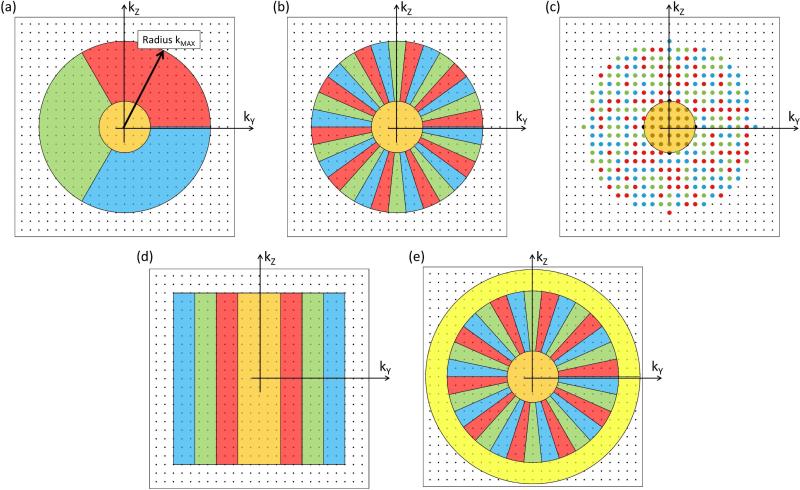Figure 2.
k-space sampling methods for view-shared 3D CE-MRA. Shown for (a) – (e) is a plot of kY-kZ space. Contemporary methods generally first identify a central region which encompasses the kY-kZ origin (orange). Next, sampling is defined for peripheral k-space, extending outward to some radius, kMAX, and subdivided into groups. One straightforward way for subdividing is to use sectors (a) with three shown here (red, green, blue). To better disperse artifacts when only central k-space and a limited number of subsets of peripheral k-space are sampled, the points among groups are more interspersed. With the CAPR method (b) this is done using slender vanes. For even better dispersion peripheral k-space can be apportioned into three random-appearing sets (c). For reference the original TRICKS technique used grouping along the kY direction (d). For improved spatial resolution one can adjust the acquisition to sample out to larger k-radii (e).

